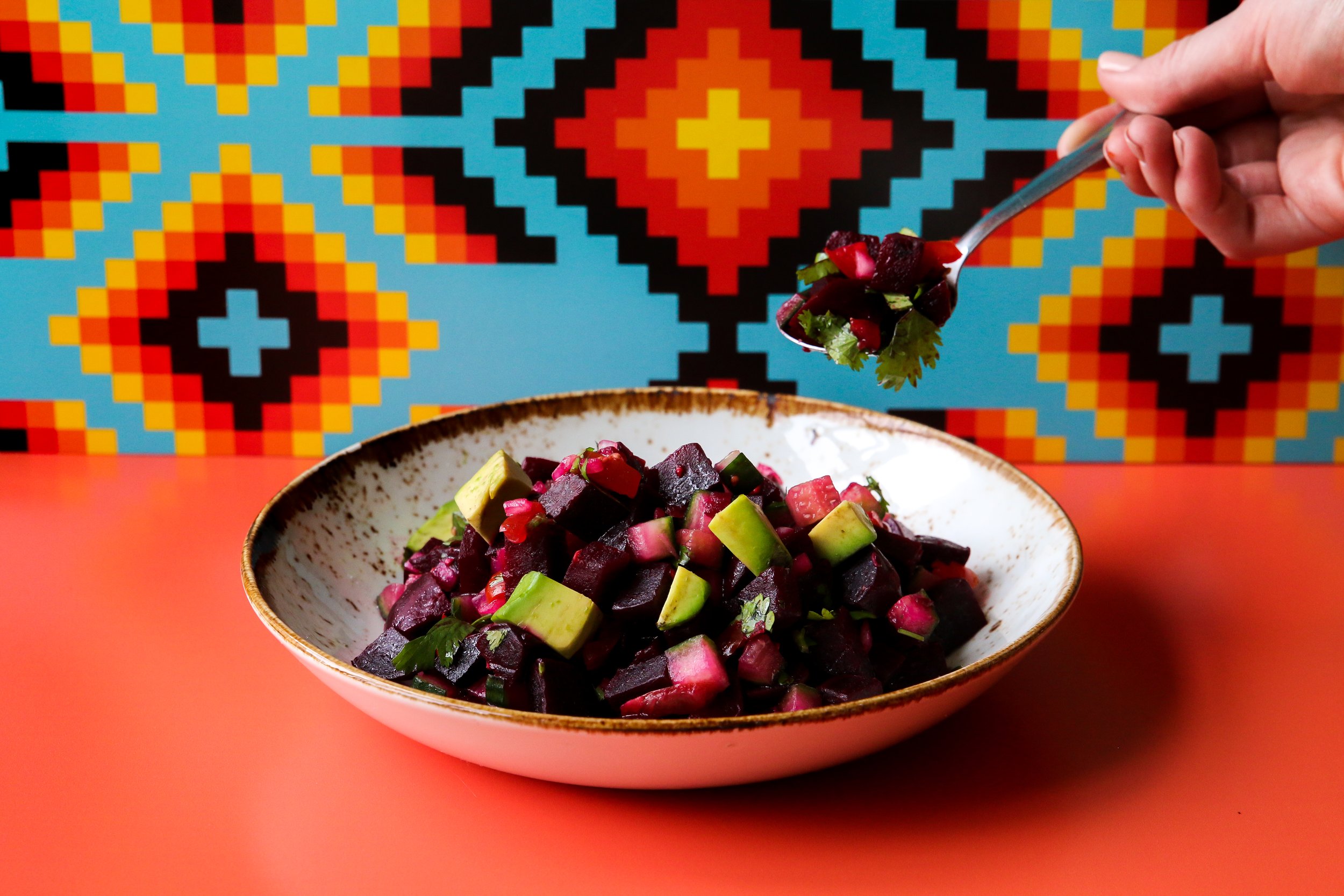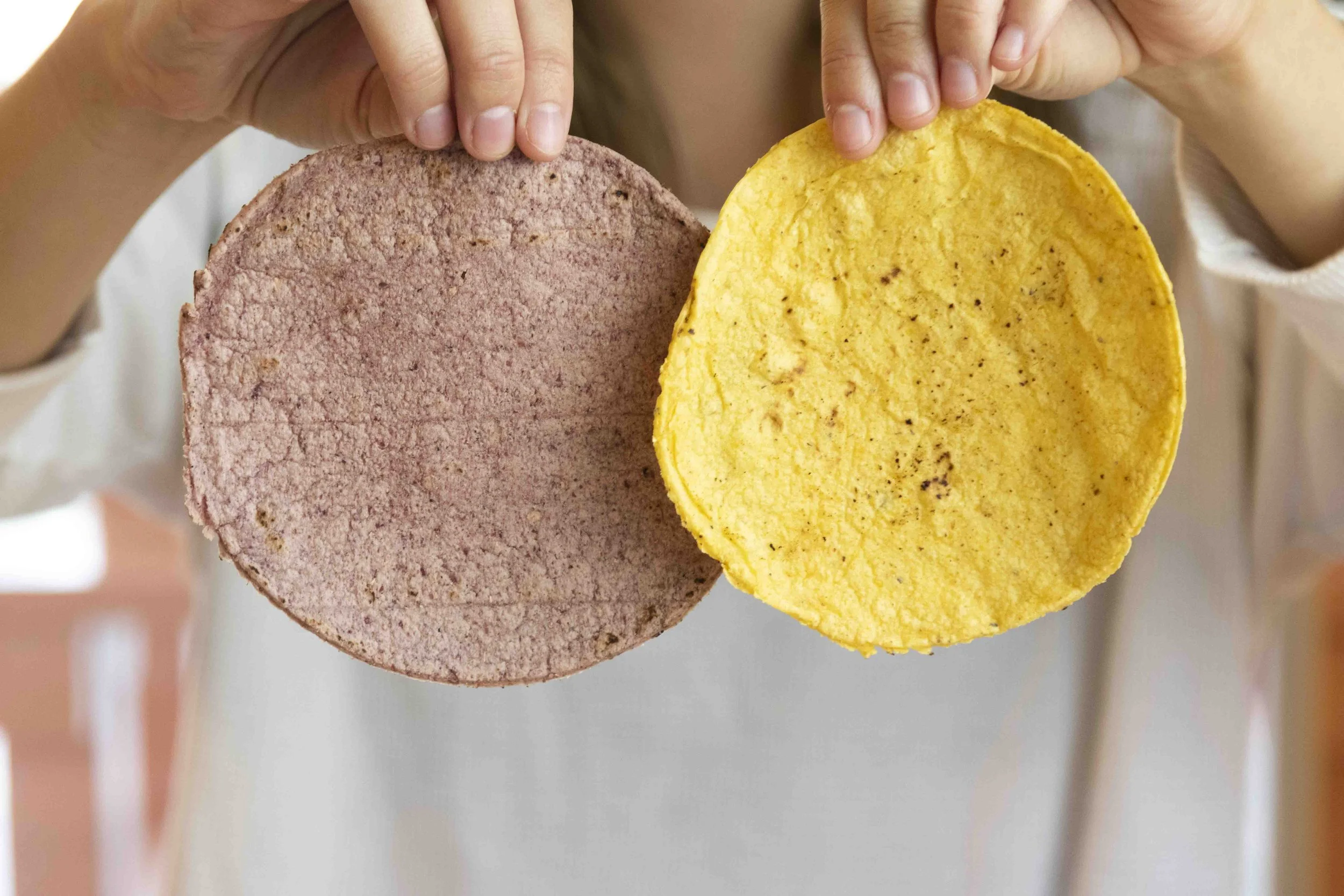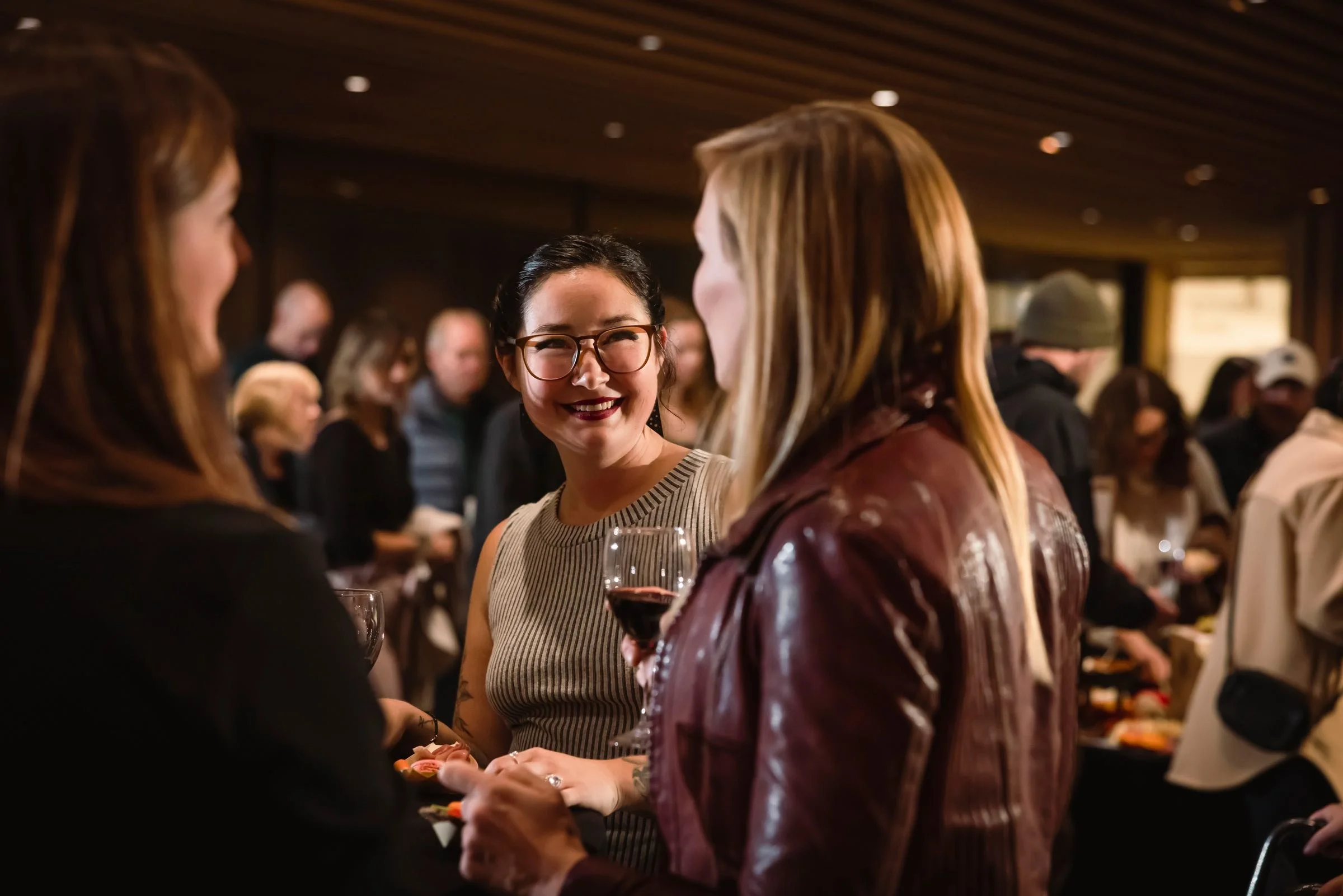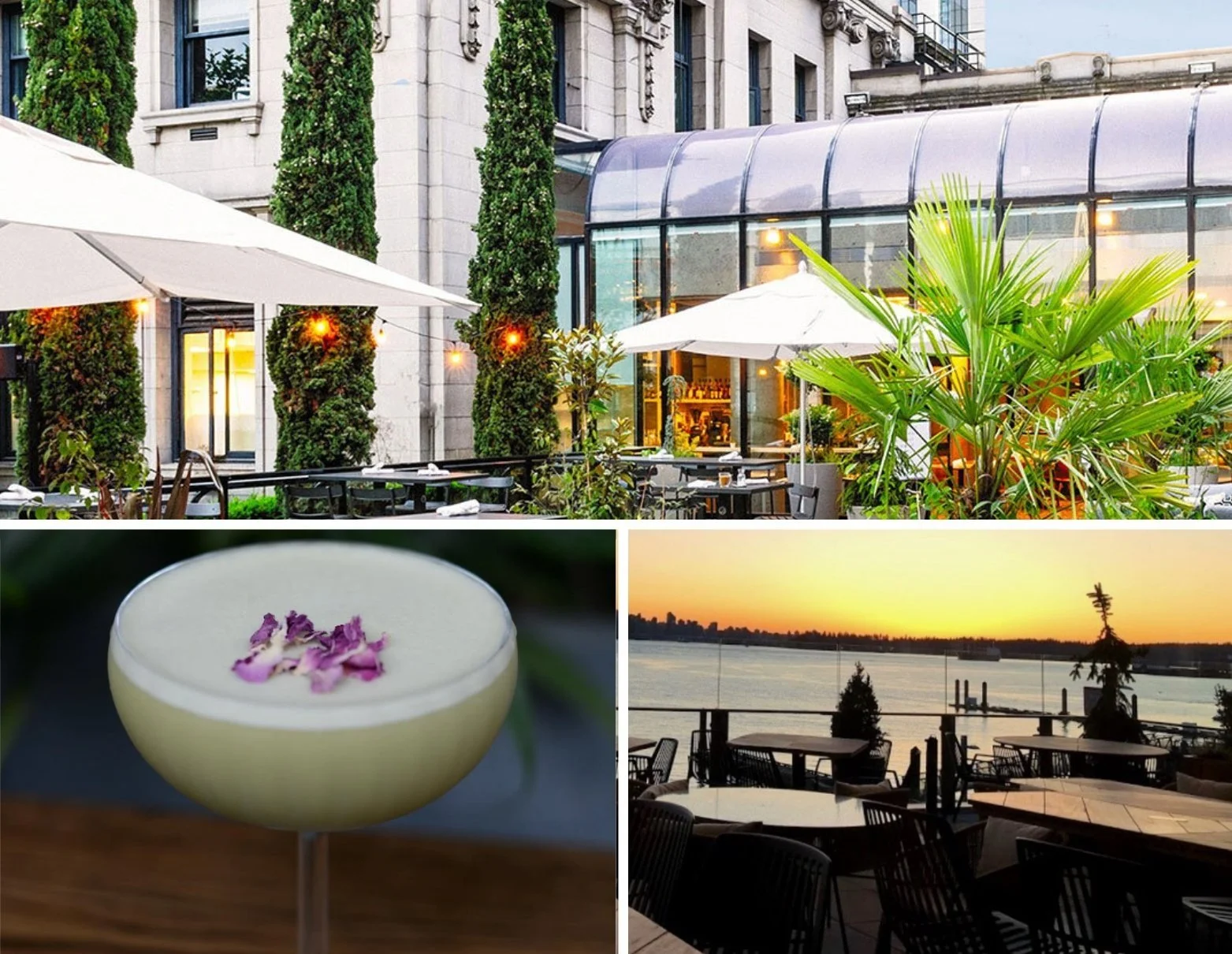Alimentaria Mexicana celebrates Mexican cuisine and culture, one kernel of corn at a time
The quest to reconnect with his Indigenous roots led to chef-founder Ernesto Gomez’s mission to support farmers and communities throughout Mexico
The Fabrica at Alimentaria Mexicana will focus on nixtamalization, a traditional means of preparing maize.
TACOS, TOSTADAS, GUACAMOLE, and churros: there’s a new place for Mexican fare in Vancouver—but Alimentaria Mexicana is not so much a restaurant as it is an entire culinary and cultural hub. Located on Granville Island, it’s home to the Cantina, with menu items ranging from botanas, or snacks, to braised stews cooked in cazuelas, traditional pots made by hand by artisans in the state of Oaxaca. Those clay vessels are among the items available in the Mercado, alongside tortilla presses, hand-made textiles and woven goods, pottery, books, utensils, and more. El Caminero is a takeout window offering snacks to go. Then there’s the Fabrica, an open kitchen in the centre of it all where heirloom corn, an ancient and prized staple of Mexican cuisine, will be showcased in all of its colourful varieties. This educational space goes straight to Alimentaria Mexicana chef-founder Ernesto Gomez’s social mission to support and highlight farmers and producers from small communities all throughout Mexico.
Alimentaria Mexicana celebrates Mexican culture through its cuisine. And it arose out of Gomez’s need and desire to connect with his own roots.
Born in Oxford, UK to Northern Mexican parents haling from Monterrey, Gomez lived in England until he was five years old. The family moved back to Mexico, where he grew up between Mexico City and Monterrey. Following high school, Gomez did his culinary training in Paris, where he worked until leaving for New York. He studied hospitality management at Cornell University, his career then taking him everywhere from San Sebastian, Spain to Tokyo to Los Angeles. When Gomez came to Vancouver, the plan was to stay for a few months, visit local relatives, and snowboard. He began working with Nuba founder Victor Bouzide. He’s still here 16 years later.
Over the years, Gomez felt something was missing. He began researching and working with communities in Mexico because he felt disconnected from his motherland.
“After more than 20 years living abroad and after 10 years working with Lebanese food and other cuisines, I felt I needed to reconnect,” Gomez tells Stir. “It first started with the search for my own cultural identity, which I’d been neglecting.”
He went on to launch Fayuca, a now-defunct restaurant that focused on fare from Mexico’s North Pacific, then opened Chancho Tortilleria, an unassuming yet outstanding eatery revered for its soft hand-made tortillas.
“I started working on the Fayuca project and then Chancho of course as an effort to make sense of myself,” Gomez says. “Through collaborations with Mexican chefs I connected with two incredible individuals who were working with native cacao and corn. I started working with them and visiting the communities, learning from the people who grew things like ancient beans, corn, chilies, spices, and cacao.”
Learning the history behind so many historic ingredients led to a deeper understanding of much more than food itself.
“I was very naive at first, thinking I could go and help to make a difference,” Gomez says. “Over time I realized it was me who needed help, and when I say me, I mean us in urban environments and cities. Together with the amazing products that these farmers grow and protect, they have a way of life in complete harmony with nature and their surroundings. Most of the negative things found in remote communities were brought on by so-called ‘progress’, things like plastic, Coca Cola, and processed foods.
“I decided to dedicate my work to reconciling the ancestral knowledge of these First Nations communities with the ‘modern’ world. I felt a deep connection to these communities as I, too, got in touch with my Indigenous roots. While part of my heritage is European and Jewish, I was neglecting my own Mexican and Apache blood.”
Ernesto Gomez. Photo by Stasia Garraway
The forthcoming Fabrica is at the heart of everything Alimentaria Mexicana does, telling the stories behind each kernel of corn and highlighting the breadth of flavours that can be traced back to thousands of years of cultivation by the Indigenous people of Mexico. Visitors will be able to learn about nixtamalization, a traditional means of preparing maize in which dried kernels are cooked and steeped in an alkaline solution. The maize is then drained and rinsed to remove the outer kernel cover and milled to produce dough that’s used as the base for everything from tortillas to tamales.
“The Fabrica will focus on the artisanal and educational side of corn,” Gomez says. “We will have different guests doing workshops on nixtamalization, tamal making, salsas, tacos, and so on. It is also the space where we will pay honour to the complex techniques of corn. Every day we will nixtamalize a different variety of corn, from a different community and a different family. We currently work with 32 different communities amongst 16 different ethnic groups. The idea is to share the knowledge of the corn art they create in each community, including tlayudas, tetelas, pellizcadas, and memelas,” he says, pointing to so many types of Mexican snacks, treats, and street foods.
Another way the team showcases the diversity of native corn varieties is in its Golden Beet Ceviche, a dazzling dish of roasted beets, avocado, cucumber, onions, tomato, cilantro, and lime, served with corn tostadas. Every single day, the team rotates the type of corn it uses.
Alimentaria Mexicana’s Golden Beet Ceviche.
Other menu highlights include a fresh take on guacamole, the avocado spread made to order and topped with pumpkin seeds, feta, and pea shoots. Halloumi and Grilled Cactus comes with charred tomatillo salsa verde with pickled red onion. Sopes with Bone Marrow is a Tijuana classic and an eye-catching dish: roasted marrow is served in the bone, alongside refried heirloom beans, gremolata and corn sopes, which are akin to small, bordered tortillas. Roasted butternut squash, red cabbage, pepitas form luxurious layers in the Vegetable Tostada while braised duck is rolled in Flautas with roasted squash, pickled red onion, and recado negro, a smoky condiment.
“Recado Negro is one of the pillars of Mayan cuisine,” Gomez says. “It’s a paste made with several toasted spices like clove, allspice, oregano, and annatto with charred garlic, blackened tortillas, vinegar, and more. It's used traditionally with turkey and other white meats—mainly chicken and pork. It's smoky, bitter, sweet, and spicy all at the same time. We make it in-house at Alimentaria."
Each taco has its own character, from shrimp (an Ensenada staple) to slow cooked beef braised in dried chilies (Birria) to Carne Asada con Queso: charbroiled skirt steak marinated in Mexican spices and citrus with charred onions and avocado.
In paying homage to the origins of its ingredients, Alimentaria Mexicana is sharing an authentic taste of Mexico.
“We have failed as cities: the abusive industrialization of foods is destroying our planet,” Gomez says. “I feel the answers to save humankind exist within the ancestral knowledge of our First Nations, so I have dedicated my work to reconciling through food and in the traceability of our products.”
For more information, see Alimentaria Mexicana.
Tortillas at Alimentaria Mexicana are made daily using different types of corn.
















